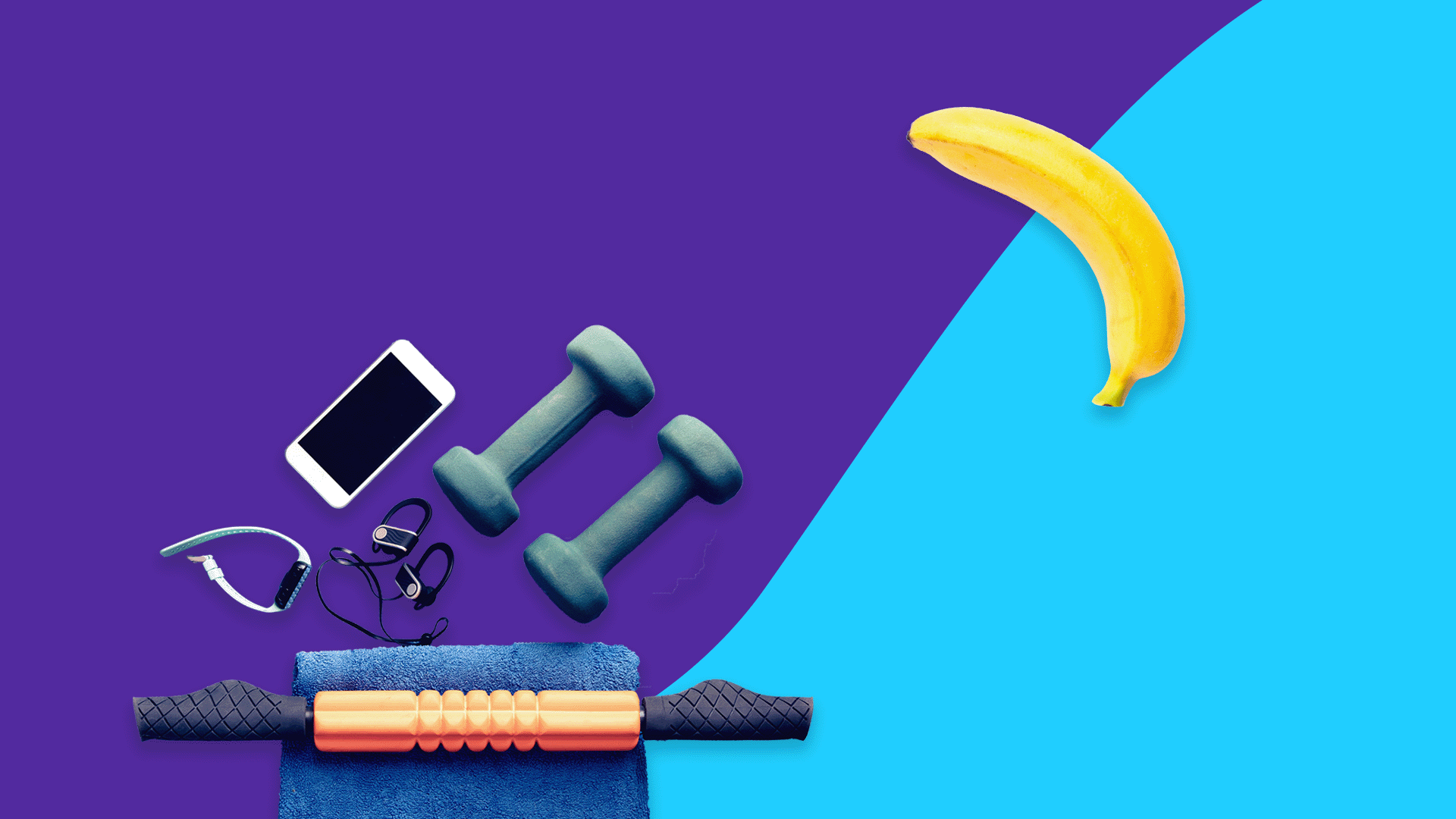Erectile dysfunction—the inability to get or maintain an erection—is the most prevalent type of sexual dysfunction among men. The condition becomes a more common men’s health issue after age 40, and as men continue to age, the prevalence increases steeply.
Experiencing erectile dysfunction is stressful, but fortunately, there are ED treatment options to help you reclaim a healthy sex life. In many cases, ED is reversible. When the underlying cause is heart disease, lifestyle interventions like physical exercise can improve or even eliminate erectile dysfunction. Research shows that improving cardiovascular health through aerobic exercise and strengthening pelvic floor muscles are effective ways to decrease ED symptoms and promote sexual health and erectile function
Read on for more information about exercise and erectile dysfunction, including the best aerobic exercises for ED, recommended activities to try, and additional tips for managing your ED and improving your quality of life.
Does exercise help ED?
While there are effective medications available to treat erectile dysfunction, studies have found that the condition is usually caused by a combination of factors. So the best way to treat ED and improve sexual function is to tackle it from more than one angle.
Risk factors for erectile dysfunction include sexual “performance anxiety,” depression, thyroid issues, neurological diseases, and reactions to medications, such as antidepressants. But probably the greatest contributing factor to developing ED is cardiovascular disease—and this is where exercise can be a potential solution.
According to a 2018 systematic review in Sexual Medicine, arterial dysfunction, which slows blood flow in the arteries, is the most common cause of erectile dysfunction. And the factors that increase your risk of cardiovascular disease—which is closely linked to arterial dysfunction—include metabolic syndrome, hypertension, and obesity, all of which are also closely linked to erectile dysfunction.
Importantly, being physically inactive is a top risk factor for cardiovascular disease. The review also found that engaging in physical activity is a protective factor against ED and can improve erectile function in men.
Judson Brandeis, MD, a board-certified urologist and sexual medicine expert at Brandeis MD in San Ramon, California, agrees with this assessment. “Absolutely, exercise can help erectile function,” Dr. Brandeis says. “Erections are a function of circulation, and cardiovascular exercise—which helps improve circulatory function, increases the amount of oxygen your body uses during exercise and reduces blood pressure—can reverse erectile dysfunction.” However, engaging in exercise doesn’t always bring immediate results, he notes, adding that it’s a process that requires dedication and consistency.
Aleece Fosnight, PA-C, a board-certified physician assistant specializing in sexual medicine and urology, and a medical adviser at Aeroflow Urology in Arden, NC, also affirms that exercise is an excellent way to address erectile dysfunction. “Any type of cardiac activity can increase blood flow to the pelvis and, in turn, to the penile tissues,” says Fosnight.
Physical activity helps manage other comorbidities that contribute to erectile issues as well, Fosnight notes, including high blood pressure, high cholesterol and diabetes. “Not only does exercise increase blood circulation and nerve sensitivity, but it can also help strengthen the muscles involved with maintaining erections (the bulbocavernosus muscle),” she says.
What is the best exercise for erectile dysfunction?
If you are just beginning to add exercise into your routine to help manage your erectile dysfunction, you may be wondering what the best type of exercise is to improve erectile function. “Any activity can be helpful as long as you are moving your body in a way that feels good to you,” Fosnight assures.
Research has found that two types of exercises seem to work best to manage ED: aerobic training and exercises that strengthen your pelvic floor. Aerobic exercise can help strengthen your heart, increase blood flow, and decrease plaque build-up in your arteries. Pelvic exercises, or kegel exercises, can strengthen the muscles that surround the penis and also increase blood flow to the penis.
Most types of exercise are safe and helpful for ED. However, Fosnight cautions against cycling, as the bicycle seat can put extra pressure on some of the nerves connected to the penis. Cycling can “cause numbness and erectile dysfunction if rides last too long (over an hour) and you’re not getting out of the saddle as often as you should,” Fosnight says.
7 exercises for ED
Experts agree that any type of physical activity can help with ED. In other words, try not to overthink it too much. If you’ve been physically inactive for a while, pick an activity that you enjoy. Something as simple as walking around your neighborhood can make a difference if you build consistency.
Below are 7 exercises recommended for ED, along with tips on how to do them and get the most out of them.
1. Aerobic exercise
Aerobic activity is a broad category. It includes any type of movement that increases your heart and breathing rate, and that usually causes you to break into a sweat. Examples of aerobic exercise include walking, jogging, dancing and active yoga. Even climbing up stairs counts! Many studies have shown correlations between increased aerobic exercise and improved sexual functioning. The above-mentioned Sexual Medicine review recommends that people with ED (particularly those who are inactive or have obesity or high blood pressure) engage in about 40 minutes of moderate to high-intensity aerobic conditioning at least four times a week.
2. Kegel exercises
No, they’re not just for women. Also known as pelvic floor activation, Kegel exercises involve squeezing and then releasing your pelvic floor muscles. One way to find these muscles is to sit down with your feet on the floor and try to raise your scrotum to your belly and then release it all the way down. Imagine that you’re trying to stop yourself from passing gas or stopping the flow of urine. You can start with one set of five repetitions daily, gradually working your way up to 10-15 reps per day.
Kegel exercises are just one type of pelvic floor exercise. A 2021 study published in Nature found that ED is often linked to a weak pelvic floor. As such, engaging in exercises to strengthen pelvic floor muscles can help reduce symptoms of ED and improve sexual functioning in patients with decreased pelvic floor strength. The following exercises, recommended by Fosnight, are also good for pelvic floor muscle training.
3. Knee fallouts
Lie on your back with your knees bent, both feet on the floor. Slowly lower one knee to the side and, keeping your hips centered, hold it for a few seconds before raising it back up to the center. Repeat. Start with 10 reps on each side, working up to 20 reps.
4. Supine foot raises
Lie flat on your back with one leg extended straight and the other leg bent at the knee with your foot on the floor. Slowly raise the straight leg towards the ceiling, hold it for about 5 seconds, then lower the leg back down with control. Repeat this several times before switching to your other leg. Begin with two sets of five on each leg, working your way up to three to four sets of 15 reps on each leg.
5. Pelvic curls
Sometimes referred to as “bridges,” start by lying on your back with both of your knees bent and your feet on the floor in front of you. Squeeze your glutes (butt muscles), then lift your hips off the floor as high as you can. Hold this position for a few seconds, then slowly lower down. Start with 10 curls, and as that becomes easier, increase to three sets of 20-25 curls.
6. Deep squats
Stand with your feet turned out, just outside shoulder width. Squat down as far as you feel comfortable. It can be helpful to place your elbows on your knees or inner thighs. Hold for twenty seconds, then release and stand back up. Repeat three times, and eventually build up to 10.
7. Side lunge stretches
Stand up with your feet a bit wider than shoulder width. With your hands on your hips, bend your right knee and lunge your body to the right, noticing a stretch in your left leg’s inner thigh. Hold for 15 seconds before returning to center. Do this three times, then repeat on your left side.
For all the exercises above, Fosnight recommends working with a physical therapist to start. A pelvic floor therapist in particular can help you identify what type of pelvic floor issues you are experiencing and target the best exercises to strengthen your pelvic floor muscles.
“One of the most common things I see in [male] pelvic floor muscles is hypertonicity or tightness,” she says. “There is a misconception between tight and strong. A tight muscle is not a strong muscle and can cause restriction around blood vessels and nerves, limiting blood flow and sensitivity to the genitals.” Fosnight says that many people actually need to downregulate, or stretch to loosen their muscles and then work on strengthening them.
Other tips for increasing blood flow with ED
Besides daily exercise, some of the most important lifestyle changes you can make to address ED and improve your overall health are quitting smoking, significantly reducing alcohol consumption, and getting enough quality sleep, says Dr. Brandeis. “Six to eight hours of sleep every night are critical for improving erectile function,” he emphasizes.
Moreover, ED usually responds very well to medication. “PDE 5 inhibitors like Cialis (tadalafil) and Viagra (sildenafil citrate) are highly effective at decreasing erectile problems and have also been shown to improve urination and lower the incidence of cardiovascular events like heart attack and stroke,” Dr. Brandeis notes. And although previous research indicated that they may help prevent dementia, recent findings indicate that there is no evidence that these drugs reduce dementia risk.
RELATED: Guide to erectile dysfunction pills, drugs and medications
It’s always important to discuss any medications you are taking with your healthcare provider, as some medications can increase symptoms of ED. These include antidepressants, blood pressure medication, opioids, alcohol and antipsychotic medications.
According to the National Library of Medicine, the amino acid supplement L-Arginine may be useful to take if you have ED. L-Arginine is known to increase levels of nitric oxide synthase in the body, which could help with erectile dysfunction. Specifically, taking 1,500 to 5,000 of L-Arginine daily may improve ED.
Whatever the case, if you have symptoms of ED, you shouldn’t hesitate to reach out for support. People with erectile dysfunction should always visit a healthcare professional, says Dr. Brandeis, because the condition is an indicator that your circulatory system is having issues. “It is very important to take erectile dysfunction seriously and make significant changes to your diet, habits and activity level,” he says. “It might just save your life.”











